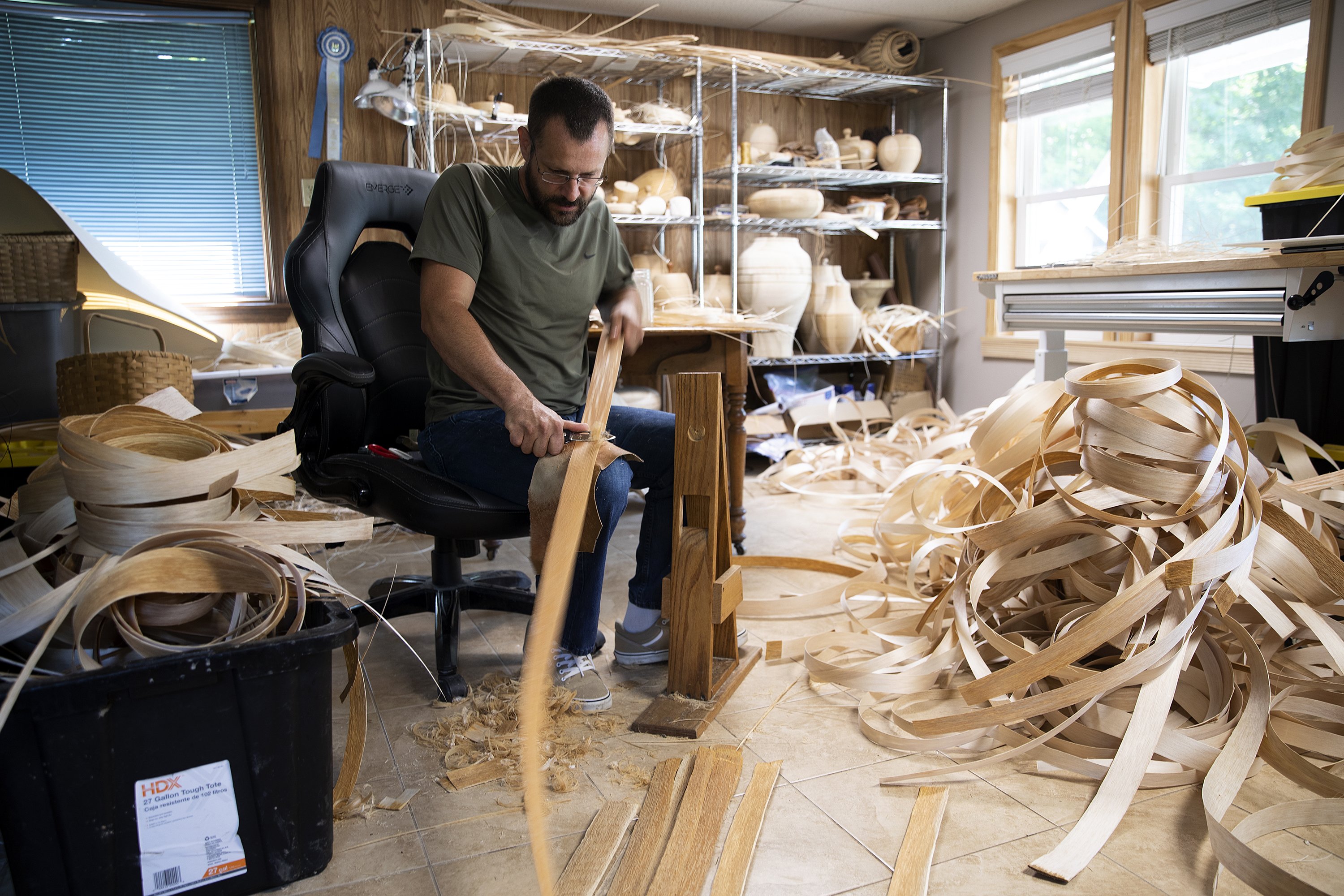Jaime De Simone knew Passamaquoddy basketmaker Jeremy Frey had blue ribbons in his studio and collectors all over the world. But in 2021, when she was working as a curator at the Portland Museum of Art, she accompanied him to the prestigious Santa Fe Indian Market in New Mexico. What she witnessed there, she said, was “celebrity status.
” “I quickly was observing how he was positioning himself and how well established he was on a national scale,” said De Simone, who is now the chief curator at the Farnsworth Museum of Art in Rockland. “People were flocking to his booth. People lined up before it even opened.

By 9 a.m., people were there wanting to purchase all of them.
I was in awe.” Frey has been making baskets for more than two decades. Recently, he shot onto the contemporary art scene.
Last year, Karma Gallery in New York started representing his work. This summer, the Portland Museum of Art is presenting “Woven,” an exhibition that will travel to venues such as the Art Institute of Chicago. It is not only his first solo show in a fine art museum – it is the first for any Wabanaki artist.
But it was in 2011 that Frey won Best in Show in Santa Fe and at the Heard Museum Guild Indian Fair and Market in Phoenix in the same year, a nearly unheard-of feat. And basketry is the oldest art form practiced in Maine. The precise weaves and mesmerizing shapes in the gallery today raise the question: Why did this recognition take so long? “There’s been a lack of re.
















